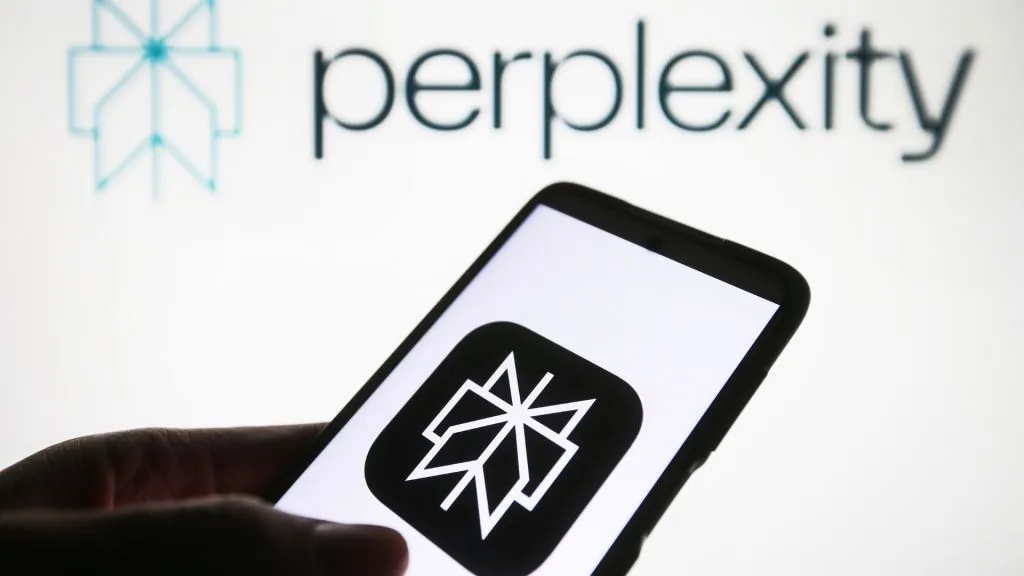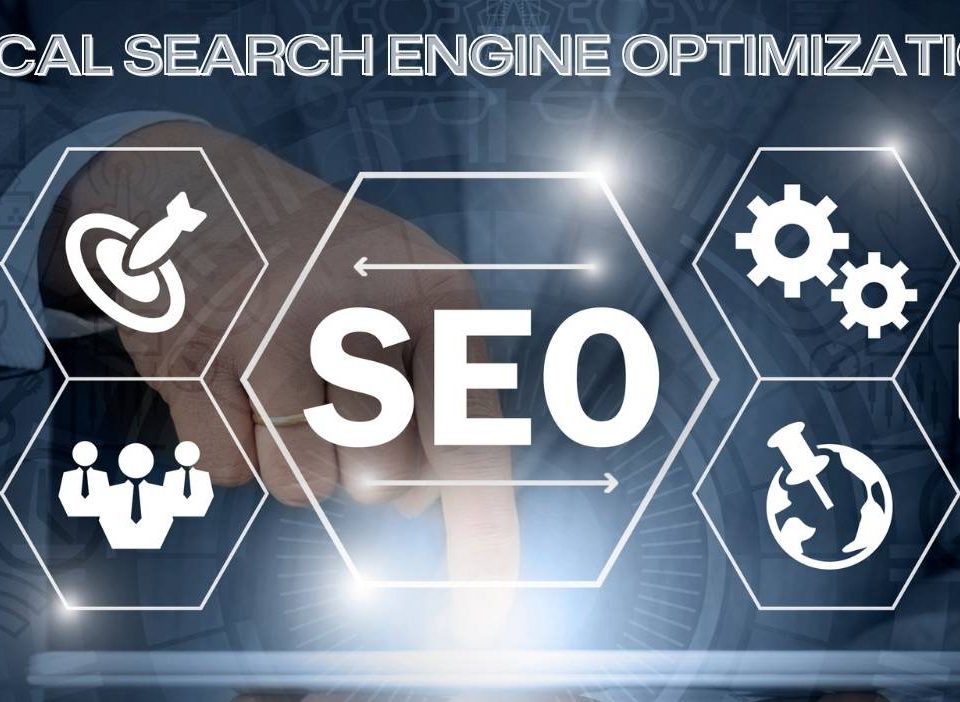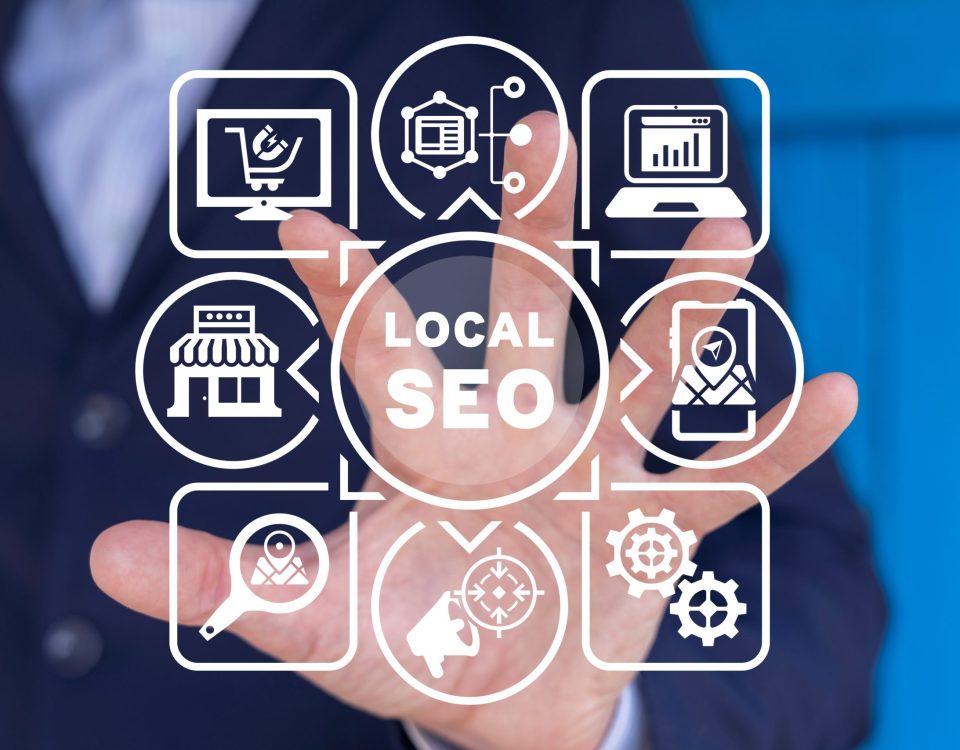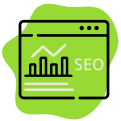
Convert More SEO Traffic Today With Practical Ecommerce CRO
November 11, 2025
Local SEO Citation Building – improving local search signals
November 21, 2025A practical, numbers-first look at how a Perplexity–Apple tie-up could reshape search – and what you should do before it happens.

The Short Version
Wondering how AI (artificial intelligence) answers change your playbook? Perplexity is growing, and an Apple default or Siri mode could shift behavior fast. Clicks compress; citations become your new real estate. Our stance: keep compounding Google wins while hedging for answer engines. In the next 90 days, fix technical foundations, add schema and TL;DR (too long; didn’t read) summaries, publish 3-5 quotable stats/definitions, claim Perplexity-native Pages/Collections, run a public relations mini-study, and start tracking AI referrals and citation share.
- Apple default scenarios could redirect a meaningful slice of mobile queries
- Perplexity rewards quotable, structured, well-cited pages
- Treat AI search as an evolution, not a replacement for Google
- Prioritize schema, FAQs, and TLDRs on key commercial pages
- Start tracking LLM-driven referrals and citation share now
Want a tailored plan for AI Overviews and Perplexity? Book our free AI Search Readiness Audit or explore our AI Overview optimization service-built for fast, guaranteed gains while we ramp your citation share.
Table of Contents
- Why this matters now
- Perplexity by the numbers
- Apple deal scenarios
- What makes Perplexity different
- 90-day optimization playbook
- Technical SEO foundations
- Content and PR strategy
- Measurement and attribution
- Risks and myths
- Mini case example + FAQs
We update our AI search insights frequently-browse the latest posts on our SEO blog.
Why This Matters Now
Last week, a Toronto client asked, “Why are blog clicks down while calls are up?” Because the interface changed: fewer blue links, more answer boxes that cite sources. In our work at Awkward Media, we’re already seeing citation-led traffic patterns. Example: a ‘dental costs in Canada’ stats hub was cited in Perplexity; 43 visits from that answer produced 9 consult requests and a 17% branded search lift in two weeks. Fewer clicks. Better intent.
What should you watch? Assisted conversions (people who saw a citation, then converted later), branded search lift, and how well your product pages answer questions. Merchandise answers on product detail pages (PDPs) and product listing pages (PLPs). Track mid-funnel education with content engagement and demo/quote starts. These are your key performance indicators (KPIs).
This only works when SEO (search engine optimization), content, paid, and email pull together. If you want a unified plan that connects citations to revenue, explore our integrated digital marketing services.
Perplexity by the Numbers
So how big is Perplexity (an AI answer engine that cites sources)? Public reporting in 2024 pegs it around 10-15M MAUs (monthly active users) with steep growth since late 2022. Third‑party traffic trackers show rising web sessions and longer dwell for research queries. That’s tiny next to Google, but the model matters: answer-first outputs compress link slots and put citations front-and-center. Even a single-digit share can shift outcomes if your brand holds one of the few visible sources during high-intent research. In our audits, Perplexity referrals are small but high-intent.
These estimates combine company statements, third‑party trackers (Similarweb, App/Play Store rankings), and our client analytics. We use ranges and directional trends, not absolutes. Figures move quickly; treat Q4 (fourth quarter) 2024 as baseline and update quarterly.
Because answers ship with links, a cited spot acts like a recommendation: fewer slots, higher trust. Early adopters over-index in B2B (business-to-business) decisions. Land citations and you punch above raw share in awareness, consideration, and assisted conversions.
What an Apple Deal Could Change
So what changes if Apple moves from curious experiments to defaults? Apple controls Safari (the browser on iOS, Apple’s iPhone operating system) and Siri (voice assistant), while Google still pays billions to be Safari’s default search. Defaults steer behavior: most people keep what ships. If Perplexity powers a research mode or becomes the answer layer, you’ll see fewer blue-link clicks and more citation-led journeys. Our plan: model scenarios, map your risk, and line up quick wins so you benefit whether people search via Google or an LLM (large language model).
| Scenario | Safari/Siri Default | Estimated Query Shift | Adoption Year 1 | Marketing Implication |
|---|---|---|---|---|
| Status quo | No | Minimal | N/A | Monitor citations and experiment, low-risk iteration |
| Light integration (Siri suggestions) | Partial | Low to moderate | 10–20% of iOS users | Start citation optimization and track LLM referrals |
| Safari default on iOS | Yes (Safari) | Moderate to high | 40–60% of iOS users | Reallocate content operations toward quotability + schema; protect branded terms |
| Full-stack integration (Safari + Siri) | Yes (Both) | High | 60%+ of iOS users | Treat AI search as a primary channel with performance metrics and budget lines |
When defaults shift, ad inventory and creative automation shift too. For the paid side, we mapped scenarios and media moves in our guide to AI advertising in answer engines.
What Makes Perplexity Different
After those Apple scenarios, the real question is: how do answers actually get built? Perplexity leads with a summary, pulls fresh context from the live web, and attaches explicit, clickable citations. Google AI Overviews (Google’s AI summaries) blend sources and sometimes downplay links. Classic SERPs (search engine results pages) still offer lists of links and modules. Different mechanics, different levers: in Perplexity, you win by being the cleanest, most citable source; in Google, you still compete for rank, snippets, and structured data wins. We optimize for both, on purpose.
| Engine | Answer Style | Citation Visibility | Indexing/Recency | Implication for SEO |
|---|---|---|---|---|
| Perplexity | Direct answers with live web context | Prominent, clickable citations | High recency via live crawl | Optimize for quotable snippets and source trust |
| Google AI Overviews | Summarized AI answers | Mixed/limited visibility | Tied to Google index cadence | Target paragraph extraction and schema alignment |
| Traditional Google Search | Ten blue links plus modules | None; citations concept doesn’t apply | Continuous crawl and reindexing | Classic SEO for rankings and CTR wins |
| ChatGPT | Model-only unless browsing enabled | Often none | Model recency dependent | Brand education and prompts; not primary for discovery |
The fundamentals still win: technical hygiene, intent-matched content, and links. If you want a proven plan, our SEO services protect Google growth while we build your citation moat.
Your 90-Day Optimization Playbook
Wondering what that looks like in practice? Here’s the 90‑day sprint we run when you can’t pause Google growth. We focus on fast experiments, lightweight content refactors (TL;DRs, FAQs, clear headings), and technical hygiene (schema, crawlability) that earn citations without derailing core SEO. We ship weekly, measure monthly, and double down on what wins. Short cycles. Clean scope. Real impact.
- Audit brand mentions and current citations; define target questions
- Add 30-50 word TLDRs and FAQs to top pages; standardize headings
- Implement FAQPage/HowTo/Product schema; validate and ship
- Create two quotable resources (data study + how-to) with media
- Secure 5-10 trusted citations via outreach and community posts
- Instrument LLM referral tracking; benchmark and iterate monthly
Need momentum faster? Outreach and authority are leverage points-our link building services secure quality mentions and citations, so your best resources get referenced in answer engines while your core Google rankings keep climbing.
Technical SEO Foundations for AI Search
Now that your sprint is mapped, the wins unlock only if pages are scannable and machine‑friendly. Ever wonder why some pages get cited? LLMs (large language models) latch onto predictable headings (H2/H3 subheads), clean HTML (page code) markup, and explicit schema (structured data) that clarifies intent. Add TL;DR (too long; didn’t read) blocks, stats tables, and anchor links so answers are easy to quote. Keep code tidy, avoid duplicate templates, and align entities with Organization and Person schema. That’s how citations happen.
| Schema Type | Best Use | AI Benefit | Example Page | Notes |
|---|---|---|---|---|
| FAQPage | Q&A hubs and product pages | Direct answer extraction | Product detail page with FAQs | Keep answers 30–80 words |
| HowTo | Step guides and tutorials | Procedural citations | Blog tutorial | Use steps + images |
| Product | Ecommerce product pages | Feature/spec clarity | Product detail page | Include reviews, price, availability |
| Organization | About and footer | Authority + brand consistency | About us | Ensure name, address, phone consistency |
| Review/AggregateRating | Product/service trust | Social proof surface | Service page | Encourage third‑party reviews |
| BreadcrumbList | Sitewide navigation clarity | Context for sections | Category pages | Improves parsing of page purpose |
Want us to handle crawling, structured data audits, and QA automation? Our technical SEO team ships clean fixes fast and keeps bots, schemas, and indexation healthy.
Content and PR Strategy for Quotability
Last week, a client asked, “What makes content quotable?” Our answer: concrete claims, crisp definitions, proprietary data, and consistent phrasing that models repeat. Examples: a one‑sentence definition box-“AI Overview (AIO) = Google’s AI summary”-on every pillar page; a stats line with date and source baked in; a mini‑study using anonymized customer data with a simple chart; and a phrase you repeat verbatim across assets (e.g., “Toronto Invisalign cost guide”). Clean, citable, easy to lift.
- Add TLDR blocks to money pages
- Publish one proprietary dataset per quarter
- Pitch expert quotes to journalists and creators
- Seed answers on Reddit/Quora and niche forums
- Reinforce brand + key terms verbatim
Want our step‑by‑step workflow? See our SEO copywriting process, then map topics with the SEO content strategy for 2024. Together, they turn quotability into a repeatable calendar.
Measurement and Attribution
Now that your calendar is rolling, how do you prove impact? We set a baseline, then track trends. Add custom dimensions for LLM (large language model) referrers, and tag outreach prompts and pitches with unique identifiers. Parse server logs to spot unusual agents and off-domain bridges, then reconcile with analytics. Annotate every content release and PR (public relations) push on the dashboard. Week to week, you’ll see citation share, AI (artificial intelligence) referrals, and assisted conversions move together. That’s how we tie answers to revenue.
| KPI | How to Measure | Target/Benchmark | Tooling |
|---|---|---|---|
| Citation Share | Percent of answers citing your pages | 10-25% in target cluster | Perplexity results logging + scripts |
| LLM Referral Sessions | Sessions from identifiable LLM agents or off-domain bridges | Establish baseline; track month over month | Analytics + server logs |
| Citation CTR (click-through rate) | Clicks from cited answers to site | Improve 10-30% with TL;DR (too long; didn’t read) | UTM parameters (tracking tags) + landing page analytics |
| Branded Search Lift | Change in branded queries | +5-15% after campaigns | Google Search Console + trend tools |
| AI-Assisted Conversions | Conversion rate of visitors from AI citations | Achieve parity with organic | Analytics with source annotations |
Want proof this works? Browse our results-driven SEO case studies to see citation-led lifts in branded search, leads, and revenue-delivered while we protected core Google rankings with our 60‑day guarantee approach.
Risks and Myths
Quick reality check before you chase the next acronym: last month a client asked if they needed “GEO” and “AEO” sprints plus aggressive “chunking.” Translation: GEO (Google AI Overviews), AEO (answer‑engine optimization), and chunking (splitting content into bite‑size passages) mostly repackage basics-clean structure, helpful media, and direct answers. We’ll keep you focused on moves that actually earn citations and revenue.
- Myth: AI search will kill Google in months – Reality: portfolios will rebalance, not vanish
- Myth: You must rebuild your site for LLMs – Reality: refactor priority pages first
- Myth: Citations are random – Reality: structure and authority make them predictable
- Myth: Local brands can ignore this – Reality: local Q&A is highly AI-summarized

Pro Tip
Need a no‑drama plan? Canada’s #1 SEO agency Canada will map your 90‑day AI search roadmap-fast, measurable, and built to protect current Google wins.
Mini Case Example: From Rankings to Citations
Two months ago, a US direct‑to‑consumer (D2C) home goods brand came to us nervous: organic drove 78% of revenue, but FAQs (frequently asked questions) were thin, no TLDRs (too long; didn’t read) on any page, PR (public relations) mentions were rare, and branded search felt soft. “People know the product, not the name,” the CMO (chief marketing officer) said. If this sounds familiar, you’re not alone-we see this pattern weekly.
In 30 days we: added 30-50 word TLDRs (too long; didn’t read) and crisp FAQs to the top 15 URLs (web addresses), published a proprietary care‑guide dataset (materials, cleaning intervals, lifespan), pitched 10 expert comments to editors, and shipped FAQPage/Product schema (structured data that labels questions and answers and product details) across those pages. Weekly QA (quality assurance) kept formatting and anchors consistent.
By day 60, branded search rose 18%, assisted conversions increased 12%, and Perplexity cited our resources 9 times across core queries. Traffic was modest but intent was excellent. Results vary by niche, authority, and execution quality, but the citation footprint compounded earned media and protected existing Google wins.
Local twist: location‑rich FAQs and steady review generation accelerate city pages. For Toronto, we paired service questions and answers (Q&A) with neighborhood cues and saw faster pickup-details on our Toronto SEO services page.
FAQs
Is Perplexity really a threat to Google?
Our read: it’s a shift, not a swap. Perplexity (an AI answer engine that cites sources) won’t replace Google soon, but defaults on iOS/Safari or Siri can nudge behavior fast. Think years, not weeks. The smart move is a hedge: we protect current rankings while earning citations now, so you’re ready if defaults move-without overcorrecting and breaking what already works.
How do I optimize pages for citations?
Make answers easy to lift. Add a 30-60 word TLDR (too long; didn’t read), concise FAQs, and clear H2/H3 headings. Use schema (structured data) like FAQPage, HowTo, Article, and Person. Write quotable lines (“The average X is Y in 2025”) and back them with original data or transparent sources. Keep HTML clean, load fast, and include author credentials and last‑updated dates.
Does this apply to local businesses too?
Yes. Local intent shows up in answer engines: “best plumber near me,” “Invisalign cost Toronto,” “hours today.” Include service area pages with FAQs, pricing ranges, and review snippets. Keep NAP (name, address, phone) consistent and optimize Google Business Profile. If you want help building this foundation fast, our local SEO service packages the maps, citations, and on‑site answers AI systems love.
What budget should I allocate in Q1–Q2?
Start small, prove, then scale. Allocate 10–20% of SEO/content ops to AI‑citation experiments in Q1–Q2: TLDR refactors, schema, one stats hub, one mini‑study, and targeted PR. Keep core SEO funded to protect rankings. If KPIs (key performance indicators) move (citation share + branded lift), step up to 25–35% in H2 while adding outreach and refresh cycles.
How do I measure success beyond rankings?
Watch trendlines, not single points. Core KPIs (key performance indicators): citation share (how often you’re cited), LLM (large language model) sessions/referrals, branded search lift, and assisted conversions/leads. Add qualitative signals: media pickups, expert mentions, and knowledge panel stability. If those rise while rankings hold, your entity is strengthening-even if raw clicks look flat.
Final Take + Next Steps
So what should you do now? Perplexity won’t kill Google, but an Apple push could compress Google’s dominance and shift incentives fast. The winners move first: make pages quotable, measure citation share, and protect core rankings. Give us 90 days; we’ll safeguard your current wins while building your citation moat and reporting impact clearly.
A practical, numbers-first look at how a Perplexity–Apple tie-up could reshape search – and what you should do before it happens.

The Short Version
Wondering how AI (artificial intelligence) answers change your playbook? Perplexity is growing, and an Apple default or Siri mode could shift behavior fast. Clicks compress; citations become your new real estate. Our stance: keep compounding Google wins while hedging for answer engines. In the next 90 days, fix technical foundations, add schema and TL;DR (too long; didn’t read) summaries, publish 3-5 quotable stats/definitions, claim Perplexity-native Pages/Collections, run a public relations mini-study, and start tracking AI referrals and citation share.
- Apple default scenarios could redirect a meaningful slice of mobile queries
- Perplexity rewards quotable, structured, well-cited pages
- Treat AI search as an evolution, not a replacement for Google
- Prioritize schema, FAQs, and TLDRs on key commercial pages
- Start tracking LLM-driven referrals and citation share now
Want a tailored plan for AI Overviews and Perplexity? Book our free AI Search Readiness Audit or explore our AI Overview optimization service-built for fast, guaranteed gains while we ramp your citation share.
Table of Contents
- Why this matters now
- Perplexity by the numbers
- Apple deal scenarios
- What makes Perplexity different
- 90-day optimization playbook
- Technical SEO foundations
- Content and PR strategy
- Measurement and attribution
- Risks and myths
- Mini case example + FAQs
We update our AI search insights frequently-browse the latest posts on our SEO blog.
Why This Matters Now
Last week, a Toronto client asked, “Why are blog clicks down while calls are up?” Because the interface changed: fewer blue links, more answer boxes that cite sources. In our work at Awkward Media, we’re already seeing citation-led traffic patterns. Example: a ‘dental costs in Canada’ stats hub was cited in Perplexity; 43 visits from that answer produced 9 consult requests and a 17% branded search lift in two weeks. Fewer clicks. Better intent.
What should you watch? Assisted conversions (people who saw a citation, then converted later), branded search lift, and how well your product pages answer questions. Merchandise answers on product detail pages (PDPs) and product listing pages (PLPs). Track mid-funnel education with content engagement and demo/quote starts. These are your key performance indicators (KPIs).
This only works when SEO (search engine optimization), content, paid, and email pull together. If you want a unified plan that connects citations to revenue, explore our integrated digital marketing services.
Perplexity by the Numbers
So how big is Perplexity (an AI answer engine that cites sources)? Public reporting in 2024 pegs it around 10-15M MAUs (monthly active users) with steep growth since late 2022. Third‑party traffic trackers show rising web sessions and longer dwell for research queries. That’s tiny next to Google, but the model matters: answer-first outputs compress link slots and put citations front-and-center. Even a single-digit share can shift outcomes if your brand holds one of the few visible sources during high-intent research. In our audits, Perplexity referrals are small but high-intent.
These estimates combine company statements, third‑party trackers (Similarweb, App/Play Store rankings), and our client analytics. We use ranges and directional trends, not absolutes. Figures move quickly; treat Q4 (fourth quarter) 2024 as baseline and update quarterly.
Because answers ship with links, a cited spot acts like a recommendation: fewer slots, higher trust. Early adopters over-index in B2B (business-to-business) decisions. Land citations and you punch above raw share in awareness, consideration, and assisted conversions.
What an Apple Deal Could Change
So what changes if Apple moves from curious experiments to defaults? Apple controls Safari (the browser on iOS, Apple’s iPhone operating system) and Siri (voice assistant), while Google still pays billions to be Safari’s default search. Defaults steer behavior: most people keep what ships. If Perplexity powers a research mode or becomes the answer layer, you’ll see fewer blue-link clicks and more citation-led journeys. Our plan: model scenarios, map your risk, and line up quick wins so you benefit whether people search via Google or an LLM (large language model).
| Scenario | Safari/Siri Default | Estimated Query Shift | Adoption Year 1 | Marketing Implication |
|---|---|---|---|---|
| Status quo | No | Minimal | N/A | Monitor citations and experiment, low-risk iteration |
| Light integration (Siri suggestions) | Partial | Low to moderate | 10–20% of iOS users | Start citation optimization and track LLM referrals |
| Safari default on iOS | Yes (Safari) | Moderate to high | 40–60% of iOS users | Reallocate content operations toward quotability + schema; protect branded terms |
| Full-stack integration (Safari + Siri) | Yes (Both) | High | 60%+ of iOS users | Treat AI search as a primary channel with performance metrics and budget lines |
When defaults shift, ad inventory and creative automation shift too. For the paid side, we mapped scenarios and media moves in our guide to AI advertising in answer engines.
What Makes Perplexity Different
After those Apple scenarios, the real question is: how do answers actually get built? Perplexity leads with a summary, pulls fresh context from the live web, and attaches explicit, clickable citations. Google AI Overviews (Google’s AI summaries) blend sources and sometimes downplay links. Classic SERPs (search engine results pages) still offer lists of links and modules. Different mechanics, different levers: in Perplexity, you win by being the cleanest, most citable source; in Google, you still compete for rank, snippets, and structured data wins. We optimize for both, on purpose.
| Engine | Answer Style | Citation Visibility | Indexing/Recency | Implication for SEO |
|---|---|---|---|---|
| Perplexity | Direct answers with live web context | Prominent, clickable citations | High recency via live crawl | Optimize for quotable snippets and source trust |
| Google AI Overviews | Summarized AI answers | Mixed/limited visibility | Tied to Google index cadence | Target paragraph extraction and schema alignment |
| Traditional Google Search | Ten blue links plus modules | None; citations concept doesn’t apply | Continuous crawl and reindexing | Classic SEO for rankings and CTR wins |
| ChatGPT | Model-only unless browsing enabled | Often none | Model recency dependent | Brand education and prompts; not primary for discovery |
The fundamentals still win: technical hygiene, intent-matched content, and links. If you want a proven plan, our SEO services protect Google growth while we build your citation moat.
Your 90-Day Optimization Playbook
Wondering what that looks like in practice? Here’s the 90‑day sprint we run when you can’t pause Google growth. We focus on fast experiments, lightweight content refactors (TL;DRs, FAQs, clear headings), and technical hygiene (schema, crawlability) that earn citations without derailing core SEO. We ship weekly, measure monthly, and double down on what wins. Short cycles. Clean scope. Real impact.
- Audit brand mentions and current citations; define target questions
- Add 30-50 word TLDRs and FAQs to top pages; standardize headings
- Implement FAQPage/HowTo/Product schema; validate and ship
- Create two quotable resources (data study + how-to) with media
- Secure 5-10 trusted citations via outreach and community posts
- Instrument LLM referral tracking; benchmark and iterate monthly
Need momentum faster? Outreach and authority are leverage points-our link building services secure quality mentions and citations, so your best resources get referenced in answer engines while your core Google rankings keep climbing.
Technical SEO Foundations for AI Search
Now that your sprint is mapped, the wins unlock only if pages are scannable and machine‑friendly. Ever wonder why some pages get cited? LLMs (large language models) latch onto predictable headings (H2/H3 subheads), clean HTML (page code) markup, and explicit schema (structured data) that clarifies intent. Add TL;DR (too long; didn’t read) blocks, stats tables, and anchor links so answers are easy to quote. Keep code tidy, avoid duplicate templates, and align entities with Organization and Person schema. That’s how citations happen.
| Schema Type | Best Use | AI Benefit | Example Page | Notes |
|---|---|---|---|---|
| FAQPage | Q&A hubs and product pages | Direct answer extraction | Product detail page with FAQs | Keep answers 30–80 words |
| HowTo | Step guides and tutorials | Procedural citations | Blog tutorial | Use steps + images |
| Product | Ecommerce product pages | Feature/spec clarity | Product detail page | Include reviews, price, availability |
| Organization | About and footer | Authority + brand consistency | About us | Ensure name, address, phone consistency |
| Review/AggregateRating | Product/service trust | Social proof surface | Service page | Encourage third‑party reviews |
| BreadcrumbList | Sitewide navigation clarity | Context for sections | Category pages | Improves parsing of page purpose |
Want us to handle crawling, structured data audits, and QA automation? Our technical SEO team ships clean fixes fast and keeps bots, schemas, and indexation healthy.
Content and PR Strategy for Quotability
Last week, a client asked, “What makes content quotable?” Our answer: concrete claims, crisp definitions, proprietary data, and consistent phrasing that models repeat. Examples: a one‑sentence definition box-“AI Overview (AIO) = Google’s AI summary”-on every pillar page; a stats line with date and source baked in; a mini‑study using anonymized customer data with a simple chart; and a phrase you repeat verbatim across assets (e.g., “Toronto Invisalign cost guide”). Clean, citable, easy to lift.
- Add TLDR blocks to money pages
- Publish one proprietary dataset per quarter
- Pitch expert quotes to journalists and creators
- Seed answers on Reddit/Quora and niche forums
- Reinforce brand + key terms verbatim
Want our step‑by‑step workflow? See our SEO copywriting process, then map topics with the SEO content strategy for 2024. Together, they turn quotability into a repeatable calendar.
Measurement and Attribution
Now that your calendar is rolling, how do you prove impact? We set a baseline, then track trends. Add custom dimensions for LLM (large language model) referrers, and tag outreach prompts and pitches with unique identifiers. Parse server logs to spot unusual agents and off-domain bridges, then reconcile with analytics. Annotate every content release and PR (public relations) push on the dashboard. Week to week, you’ll see citation share, AI (artificial intelligence) referrals, and assisted conversions move together. That’s how we tie answers to revenue.
| KPI | How to Measure | Target/Benchmark | Tooling |
|---|---|---|---|
| Citation Share | Percent of answers citing your pages | 10-25% in target cluster | Perplexity results logging + scripts |
| LLM Referral Sessions | Sessions from identifiable LLM agents or off-domain bridges | Establish baseline; track month over month | Analytics + server logs |
| Citation CTR (click-through rate) | Clicks from cited answers to site | Improve 10-30% with TL;DR (too long; didn’t read) | UTM parameters (tracking tags) + landing page analytics |
| Branded Search Lift | Change in branded queries | +5-15% after campaigns | Google Search Console + trend tools |
| AI-Assisted Conversions | Conversion rate of visitors from AI citations | Achieve parity with organic | Analytics with source annotations |
Want proof this works? Browse our results-driven SEO case studies to see citation-led lifts in branded search, leads, and revenue-delivered while we protected core Google rankings with our 60‑day guarantee approach.
Risks and Myths
Quick reality check before you chase the next acronym: last month a client asked if they needed “GEO” and “AEO” sprints plus aggressive “chunking.” Translation: GEO (Google AI Overviews), AEO (answer‑engine optimization), and chunking (splitting content into bite‑size passages) mostly repackage basics-clean structure, helpful media, and direct answers. We’ll keep you focused on moves that actually earn citations and revenue.
- Myth: AI search will kill Google in months – Reality: portfolios will rebalance, not vanish
- Myth: You must rebuild your site for LLMs – Reality: refactor priority pages first
- Myth: Citations are random – Reality: structure and authority make them predictable
- Myth: Local brands can ignore this – Reality: local Q&A is highly AI-summarized

Pro Tip
Need a no‑drama plan? Canada’s #1 SEO agency Canada will map your 90‑day AI search roadmap-fast, measurable, and built to protect current Google wins.
Mini Case Example: From Rankings to Citations
Two months ago, a US direct‑to‑consumer (D2C) home goods brand came to us nervous: organic drove 78% of revenue, but FAQs (frequently asked questions) were thin, no TLDRs (too long; didn’t read) on any page, PR (public relations) mentions were rare, and branded search felt soft. “People know the product, not the name,” the CMO (chief marketing officer) said. If this sounds familiar, you’re not alone-we see this pattern weekly.
In 30 days we: added 30-50 word TLDRs (too long; didn’t read) and crisp FAQs to the top 15 URLs (web addresses), published a proprietary care‑guide dataset (materials, cleaning intervals, lifespan), pitched 10 expert comments to editors, and shipped FAQPage/Product schema (structured data that labels questions and answers and product details) across those pages. Weekly QA (quality assurance) kept formatting and anchors consistent.
By day 60, branded search rose 18%, assisted conversions increased 12%, and Perplexity cited our resources 9 times across core queries. Traffic was modest but intent was excellent. Results vary by niche, authority, and execution quality, but the citation footprint compounded earned media and protected existing Google wins.
Local twist: location‑rich FAQs and steady review generation accelerate city pages. For Toronto, we paired service questions and answers (Q&A) with neighborhood cues and saw faster pickup-details on our Toronto SEO services page.
FAQs
Is Perplexity really a threat to Google?
Our read: it’s a shift, not a swap. Perplexity (an AI answer engine that cites sources) won’t replace Google soon, but defaults on iOS/Safari or Siri can nudge behavior fast. Think years, not weeks. The smart move is a hedge: we protect current rankings while earning citations now, so you’re ready if defaults move-without overcorrecting and breaking what already works.
How do I optimize pages for citations?
Make answers easy to lift. Add a 30-60 word TLDR (too long; didn’t read), concise FAQs, and clear H2/H3 headings. Use schema (structured data) like FAQPage, HowTo, Article, and Person. Write quotable lines (“The average X is Y in 2025”) and back them with original data or transparent sources. Keep HTML clean, load fast, and include author credentials and last‑updated dates.
Does this apply to local businesses too?
Yes. Local intent shows up in answer engines: “best plumber near me,” “Invisalign cost Toronto,” “hours today.” Include service area pages with FAQs, pricing ranges, and review snippets. Keep NAP (name, address, phone) consistent and optimize Google Business Profile. If you want help building this foundation fast, our local SEO service packages the maps, citations, and on‑site answers AI systems love.
What budget should I allocate in Q1–Q2?
Start small, prove, then scale. Allocate 10–20% of SEO/content ops to AI‑citation experiments in Q1–Q2: TLDR refactors, schema, one stats hub, one mini‑study, and targeted PR. Keep core SEO funded to protect rankings. If KPIs (key performance indicators) move (citation share + branded lift), step up to 25–35% in H2 while adding outreach and refresh cycles.
How do I measure success beyond rankings?
Watch trendlines, not single points. Core KPIs (key performance indicators): citation share (how often you’re cited), LLM (large language model) sessions/referrals, branded search lift, and assisted conversions/leads. Add qualitative signals: media pickups, expert mentions, and knowledge panel stability. If those rise while rankings hold, your entity is strengthening-even if raw clicks look flat.
Final Take + Next Steps
So what should you do now? Perplexity won’t kill Google, but an Apple push could compress Google’s dominance and shift incentives fast. The winners move first: make pages quotable, measure citation share, and protect core rankings. Give us 90 days; we’ll safeguard your current wins while building your citation moat and reporting impact clearly.
Get Expert Help
Let's discuss your GBP growth plan







